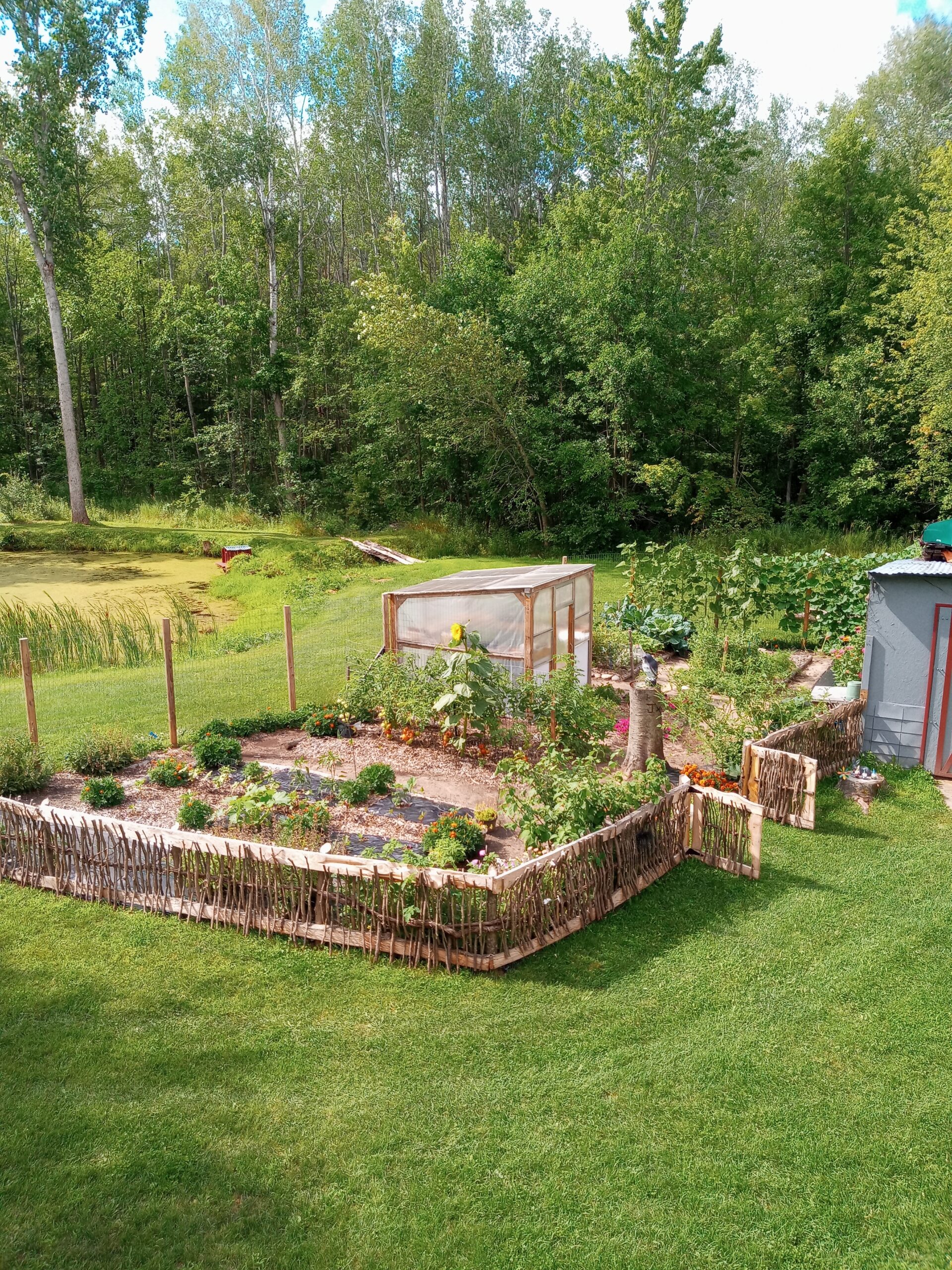The easiest and fastest way to start a garden from scratch is by using the lasagna method or raised beds. This is my preferred way to garden. You can start growing faster and skip the back breaking work of using a rototiller in a traditional garden. If you do not have the space for a garden, you can start with container gardening. In this post I will give step by step instructions to get you started.
The first step is to choose where you want it to be. The ideal location should get at least 6-8 hours of direct sunlight. This is crucial because without an ample amount of sunlight your plants will not grow and produce to their potential. Your garden should also be within close proximity to your house. If it is too far away you are less likely to tend to it. It will also be more of a hassle to keep it watered. Once you have chosen your area, you can begin with whatever method you choose to use.
Lasagna Method/ Raised Beds

To start a garden from scratch with this method you will need cardboard or newspapers, organic garden soil and compost. The cardboard and newspapers will break down into compost over time. You will then cut the grass as short as possible where your garden will be.
Next you will lay the cardboard/newspaper down as your first lasagna layer. The ideal width of a garden bed is 4 feet. This ensures that ou will be able to reach the center, comfortably, from either side. You can make the length as long as you have space for. Once the cardboard is in place, thoroughly water it until it is soaked all the way through. Now its time to add your first layer of compost roughly 2 inches thick. Next, add a layer of garden soil at least 3 inches thick. Top with another layer of compost 2 inches thick. Congratulations! You just started your first garden bed and are ready to plant.
As you can see in my picture above, I opted to edge my beds with rocks and logs from my property. If you have access to these materials they work perfectly. While it is not necessary to edge your beds, it does make it easier. You will know exactly where your planting area is and you can avoid walking in it which compacts the soil. You can purchase raised bed kits to put together or build them yourself. Materials such as untreated lumber, cinder blocks or corrugated metal are most commonly used.
Every fall I add wood chips, compost and shredded leaves directly on top of my beds. No tilling needed. These materials breakdown over the winter and enrich the soil for spring planting.
Traditional Row Garden
To start a garden from scratch using traditional methods you will need a rototiller, compost and something to mark your perimeter with. You will begin by marking the perimeter. Then you will use the rototiller and till the area inside that perimeter. Be sure to take out any big clumps of grass so they don’t replant themselves.
Next you are going to spread compost throughout the garden. Depending on the size of your garden, it may be best to get a truckload of compost from a local farmer. Once the compost is spread you will need to go through with the rototiller and till it into the soil. If you are doing a smaller garden you can purchase bagged compost and spread it where you want your rows to be. Then you can work it into the soil with a rake.
Now that you have the compost worked in, you can form your rows and begin to plant.
Container Garden
To start a container garden from scratch, there is a little more planning involved. You will need to figure out how many of each vegetable you want to grow before you begin. This will determine how many containers/pots you will need. You also need to make sure you have enough room on your deck/porch/patio where you will be growing them.
Next you need to determine the right size containers/pots you need. Certain vegetables require different depths for root growth. Five gallon buckets will work for any vegetable. If you choose to go with pots or other containers you need to make sure they are deep enough.
Deep rooting vegetables such as: tomatoes, watermelon, winter squash, pumpkin and sweet potatoes need at least a 24-36 inch depth.
Medium rooting vegetables such as: beans, peas, carrots, cucumber, peppers and summer squash need at least a 18-24 inch depth.
Shallow rooting vegetables and flowers such as: strawberries, spinach, lettuce, radish, onions and marigolds need at least a 12-18 inch depth.
So now you have gathered all the pots you need, you can start filling them with soil. It is best to use organic garden soil. If you don’t have a garden trowel (small shovel), you can use a large spoon or cup from your kitchen. Whatever you have on hand will work as long as it’s clean. Be sure to fill your pots where you will be growing them to avoid moving them once they’re filled. You’re now ready to plant.

